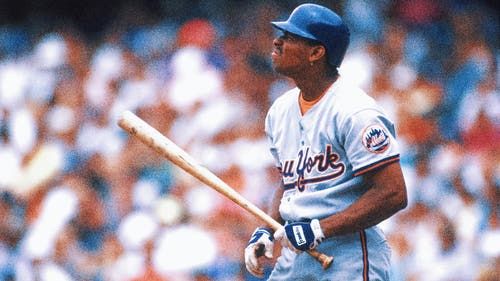
Baseball 'Champagne goggles' make some fans groan
When the New York Yankees clinched their spot in the World Series last week, the casual TV viewer might have wondered if they were about to go swim the 200-meter butterfly with Michael Phelps. Call it a fashion statement for the very rich and very happy: There they were, stars like CC Sabathia, Mark Teixeira and Johnny Damon, sporting swim goggles to protect their eyes from the victory Champagne being poured, squirted and sprayed amid the post-game revelry. It's become a more familiar sight in the past few years in the locker rooms of baseball's top teams. And some die-hard fans aren't too happy. Sure, they say, it's important to preserve those valuable eyes. But the eyewear sure looks a little goofy, doesn't it? And more importantly, it suggests a broader problem, these fans say: Post-game celebrations have become too predictable, with all that unspontaneous Champagne-pouring. "I guess it was funny when they first poured Champagne on somebody, but it's just too prepared, too scripted now," says Matt O'Donnell, a high school history teacher and baseball fan in Sebastopol, Calif. "The way they have the plastic tarps all laid out in the locker room, and they have the goggles already set up there." O'Donnell, 39, is an ardent Boston Red Sox fan (his 4-year-old son's middle name is Fenway, after Fenway Park.) "Please, No More Champagne Goggles!" he pleaded on his baseball blog in September, when his team was about to clinch a playoff spot. After every big victory, he complained, the plastic sheets go up, "and then a few players will put on the readily available ridiculous looking champagne goggles and begin spraying their teammates. A manager or coach will inevitably be sprayed with bubbly ... and the perpetrator will think it is the funniest thing ever. Yawn." Patrick Stimson agrees. "Why can't they all just go into the clubhouse and celebrate naturally?" asks the 28-year-old Oakland A's fan. "What I like is spontaneous moments." And while the goggles don't lessen any of his respect for the top players, he does see them as a sign that today's athletes may be getting a little softer. "It just seems like something the older, more hardened players of yesterday wouldn't wear - not something you'd have seen on Babe Ruth or Pete Rose," says Stimson, who lives in Los Angeles and works in online marketing. "There's a notion that today's players are coddled, multi-gazillionaire athletes, and maybe this is an outgrowth of that." On his own baseball blog, Stimson recently posted the question of whether Champagne goggles were ever acceptable - or whether it made the players seem, well, wimpy. "Most people thought it took away some of their manly nature," he says. Talk to an eye doctor, though, and you'll be converted to the pro-goggle side with the speed of one of Sabathia's fastballs. Champagne has a high alcohol content, high enough to damage the surface lining of the cornea, says Dr. Matthew Gardiner, director of emergency ophthalmology services at the Massachusetts Eye and Ear Infirmary. (For those medically inclined, the lining is called the epithelium.) "A corneal abrasion like that usually heals within two to three days, but it can be extremely painful while it's healing," says Gardiner. In other words, you don't want your ace pitcher or hitter nursing a corneal abrasion while taking on the next team, as the Yankees did a few days after their pennant victory against the Los Angeles Angels, facing the Philadelphia Phillies for the big prize. (The series stands 3-2, Yankees.) For Jane Heller, the well-being of her treasured Yankees is the key concern - much more important than how silly they may or may not look in goggles. "I see all these posts, saying gee, what sissies," says Heller, a lifelong Yankee fan in Santa Barbara, Calif., who blogs about the Yankees on "Confessions of a She-Fan," and has written a book of the same name. "But it doesn't bother me." What bothers Heller more is what the goggles might represent: "These quote-unquote celebrations have become so calculated and neat and tidy now," she says. "It used to be a spontaneous burst of enthusiasm. There was no plastic tarp covering everything." Heller notes that the goggles are a relatively new phenomenon, something she first noticed in 2007. "I noticed that one player, Doug Mientkiewicz, was wearing them during a celebration," she says. At the National Baseball Hall of Fame's library, researcher Gabriel Schechter can't pinpoint when the first Champagne goggles were donned, but he says it's only in recent years. (Champagne celebrations, on the other hand, have been around since the 1950s, when they took the place of beer.) "It might just be that they're using so much more Champagne now that it's really hazardous," says Schechter. One important baseball fan doesn't know anything of the goggle tradition. "Really?" asks W.P. Kinsella, whose novel, "Shoeless Joe," became the movie "Field of Dreams." "It sounds so calculated," the author says. "Just so you don't get a little Champagne in your eyes." (Kinsella, a huge fan, says he hates watching the celebrations and always turns the TV off anyway once the game is over.) Hazards aside, fans like Brian Welch may find it hard not to stifle a giggle when they see the next World Series champs don their swim equipment on Wednesday or Thursday, when the series ends. "I think the goggles are hilarious," says Welch, 34, a Cincinnati Reds fan who lives in Chicago. But he hopes the victorious Yanks or Phillies, with finally no games left to worry about, will throw caution to the wind - or, more like it, to the spray. After all, says Welch, "Maybe it's good to save your eyes before you go on to the World Series. But once you've won, hey. You've just won the World Series! Suck it up. Get some Champagne in your eyes!"










